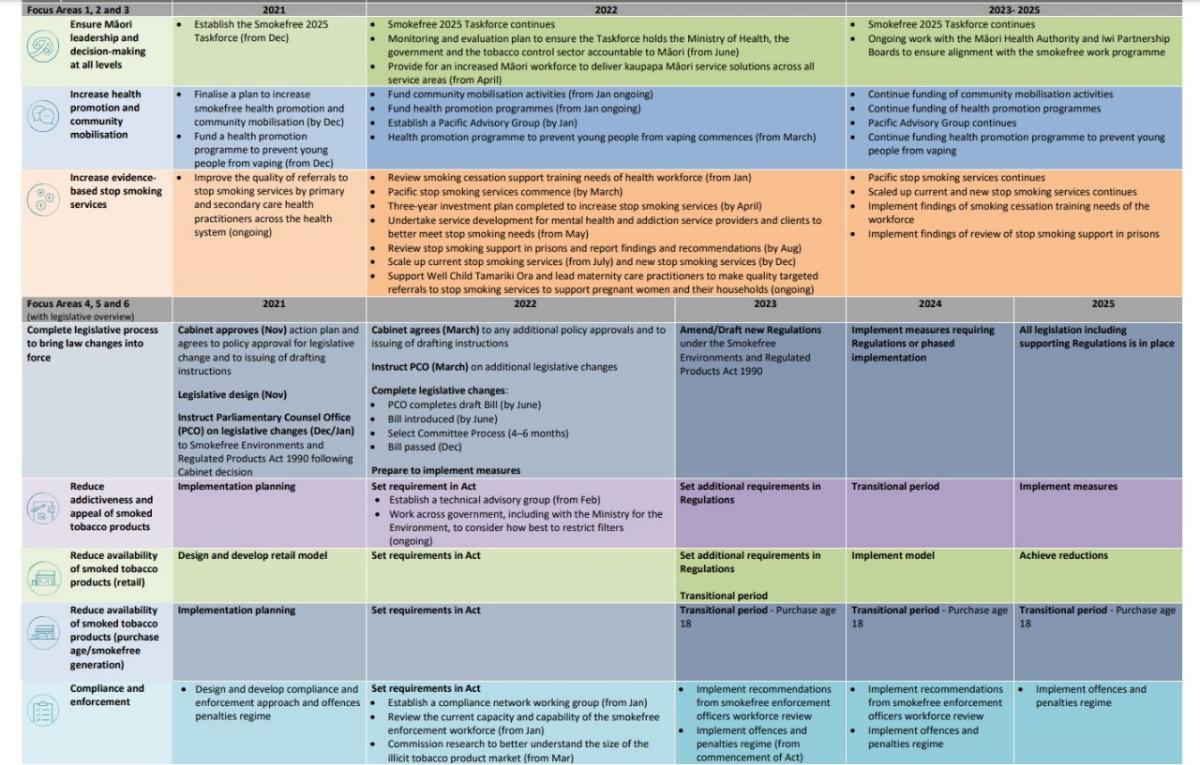To meet its Smokefree 2025 goal, the Government will create a smoke-free generation by making it impossible for Kiwis below age 14 to ever legally purchase cigarettes in the future.
The Government will gradually increase the age of purchase restrictions every year, meaning eventually there will be an age cohort who won't be able to legally purchase cigarettes.
"We want to make sure young people never start smoking so we will make it an offence to sell or supply smoked tobacco products to new cohorts of youth," Associate Health Minister Ayesha Verrall said on Thursday.
"People aged 14 when the law comes into effect will never be able to legally purchase tobacco.
"We are also reducing the appeal, addictiveness and availability of smoked tobacco products. New laws will mean only smoked tobacco products containing very low-levels of nicotine can be sold, with a significant reduction in the number of shops who can sell them."
Dr Verrall said the changes will not come into effect immediately, giving retailers time to transition to a new business model.
The Government is establishing a Māori Advisory Taskforce, led by former Māori Party co-leader Dame Tariana Turia, to ensure the Government and the tobacco control sector remain accountable to the actions of the plan.
New laws will be passed in 2022 to reduce the addictiveness of smoked tobacco products, reduce the availability, create a smoke-free generation, and implement a new penalties regime.
The details are still to be hashed out, but Dr Verrall said there will only be about 500 retailers eligible to sell cigarettes. Those retailers will have to apply to sell the products, similar to seeking an alcohol licence.
An implementation plan provided by Dr Verrall's office shows the smoke-free generation plan won't come into effect until 2026. The legal age of purchasing cigarettes will remain 18 until 2025.

The announcement on Thursday closely aligns with proposals launched by Dr Verrall in April, which were put into the public domain for consultation.
The proposals included the smoke-free generation idea, reducing nicotine in smoked products to "very low levels", prohibiting cigarette filters, setting a minimum price for tobacco to make it less affordable, and outlawing innovations aimed at increasing appeal.
The Government decided not to pursue banning filters.
The target to slash smoking in New Zealand came after the Māori Affairs Select Committee led an inquiry in 2010 into the tobacco industry and the consequences for Māori. It recommended setting a goal for Aotearoa to be smoke-free by 2025.
The Government responded in 2011 by adopting the goal to make New Zealand smoke-free by 2025. This is interpreted to mean less than 5 percent of New Zealanders of all ethnic and social groups will smoke daily by 2025.
But in the Government's proposals to meet the 2025 goal, it said a business-as-usual approach would mean New Zealand wouldn't meet its smoke-free goal, and Māori not until 2061.
Research shows people want to quit smoking. In a 2017 survey by Ernst & Young, 77 percent of smokers surveyed reported that they had tried quitting or reducing their smoking in the past.
The Government has tried to prevent smoking by taxing tobacco, legislating smoke-free and vape-free areas such as indoor workplaces and schools, prohibiting advertising and sponsorship of tobacco products, and standardising packaging with warnings on cigarette packages.
Between 2011 and 2020, tobacco excise tax increased 10 percent each year on top of the annual adjustment made to keep pace with inflation.
Dr Verrall has ruled out further tax hikes.
Nanny state?
ACT MP Karen Chhour fears the Government's plan is "prohibition plain and simple" and could create a black market for tobacco products.
"As a former smoker, I'm sick and tired of Labour trying to socially engineer us into changing our behaviour," Chhour, ACT's social development spokesperson, said.
"No one wants to see young people smoke, but the reality is, some will. And Labour's nanny state prohibition is going to cause problems. Prohibition has never worked - in any time or place - and it always has unintended consequences.
"This will drive up the trade of black market tobacco with high nicotine, driving those addicted to cigarettes to turn to crime to feed their habit. The gangs will be rubbing their hands with glee."
Dr Verrall disagreed, telling reporters: "We need to make sure that we have strong enforcement and we'll do that as we develop the laws."
Quick facts on smoking:
- almost half a million New Zealanders still smoke daily
- smoking is a leading cause of preventable death and disease in New Zealand and causes one in four cancer deaths
- tobacco kills approximately 4500 people every year in New Zealand, that is around 12 deaths a day due to smoking or exposure to second-hand smoke
- Māori smoking rates remain much higher than those for the overall population
- Māori women have New Zealand's highest smoking rates, with just under one-third smoking daily
- cancer is the leading cause of death for Māori women and the second leading cause for Māori men; lung cancer mortality among Māori women is over four times that of non- Māori women
- smoking prevalence among Pacific peoples remains persistently higher than that of the overall population, with only a small reduction in prevalence in the last 10 years
- second-hand smoke exposure also increases a child's risk of serious infections that affect breathing, including pneumonia and bronchitis
- second-hand smoke causes around 15,000 asthma attacks in children aged under 16 years in New Zealand every year



